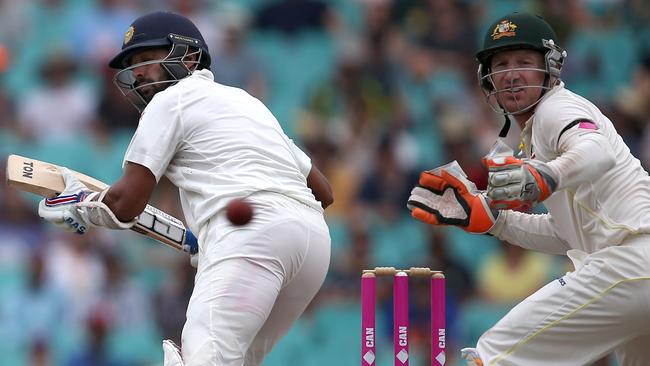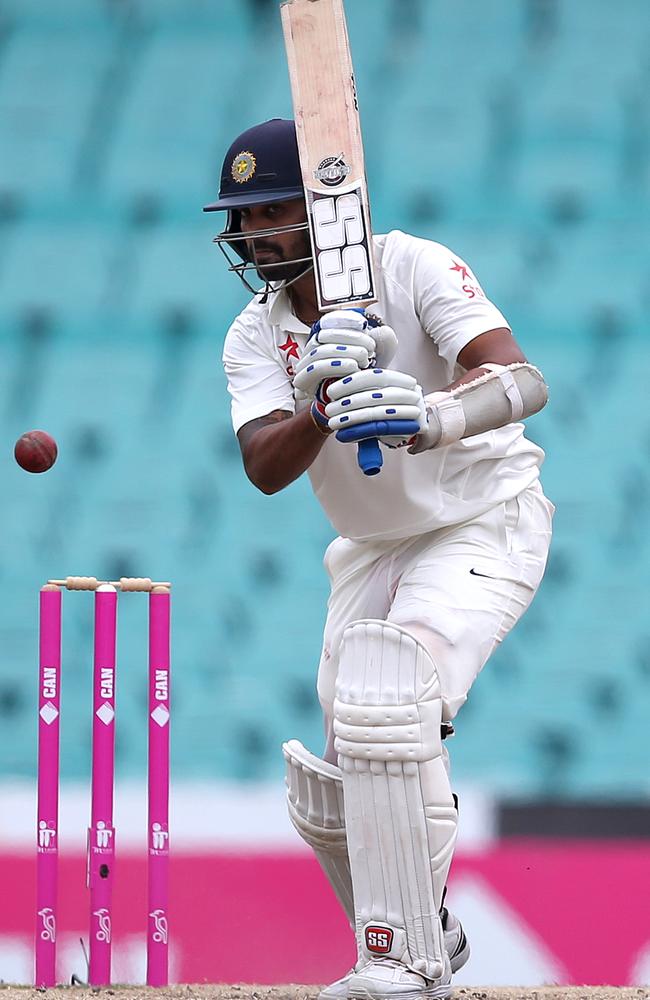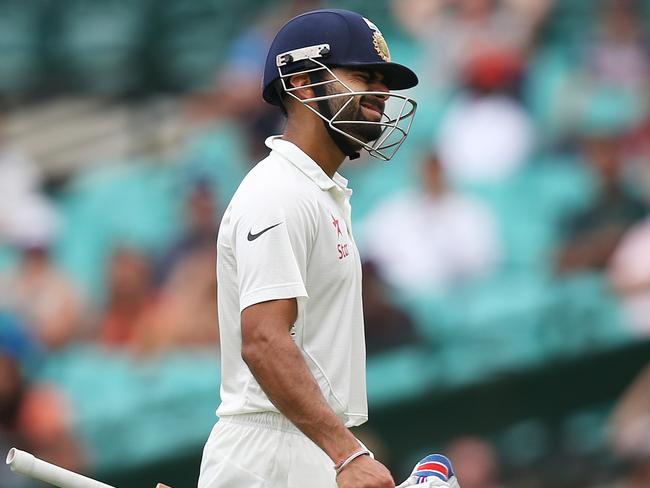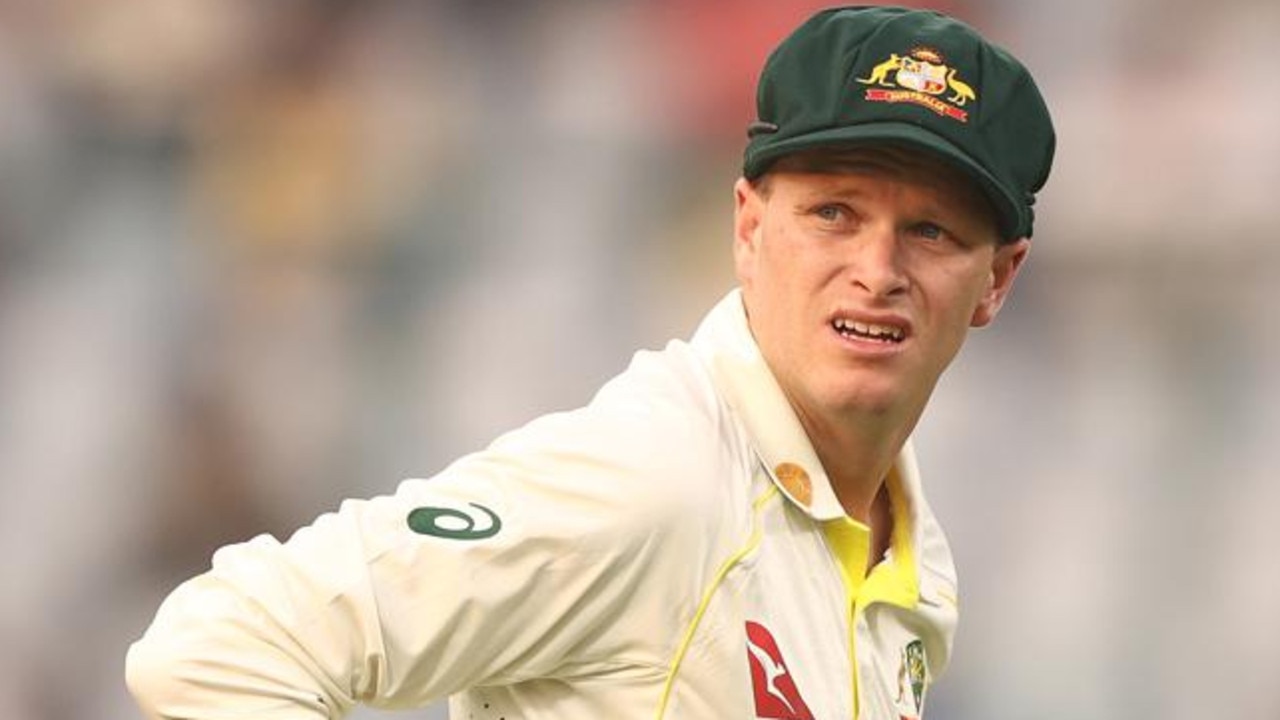Australia v India 2015: Indians pay price for lack of aggression at SCG, writes Paul Kent
INDIA paid the price for a lack of aggression. It played for survival when it had a chance to win and nothing is more costly.

Opinion
Don't miss out on the headlines from Opinion. Followed categories will be added to My News.
WITH 20 overs left Brad Haddin, volunteering his commentary for free, reminded India what the recent dismissal of Virat Kohli meant.
“Its changed the game, boys,” Haddin said. “Changed the game.”
India was paying the price for a lack of aggression.
They played for survival when they had a chance to win and nothing is more costly.
REPORT: AUSSIES, LYON FALL SHORT
CRICKET CONFIDENTIAL: RAINA’S ROTTEN RUN
After a Test that waded through the doldrums for most of the four days, a solid declaration overnight from Australian skipper Steve Smith after an aggressive second innings set up a nicely poised final day.
But did it come too late?
There was a thought Smith might have declared a half-hour before stumps on day four to give his quicks a late afternoon burst at the Indian batsmen, but a question over whether enough light remained killed that.

Instead it all came down to Saturday.
India had a full day to peel in 349 runs, at what worked out to be slightly less than four runs an over. One of the great chasing sides in the world, with some of the world’s best one-day batsmen, Smith had certainly dangled a juicy choice for the Indians.
Still, it was no guarantee.
With nobody sure what India would do our hearts fluttered early when it looked like we might get a contest.
Early in the first session Murali Vijay forgot where he was for a moment and took to Nathan Lyon.
Suddenly it was all happening. Where was Bill Lawry?
Vijay went four, dot ball, two, six and then edged to Haddin. The ball missed Haddin’s glove and found his thigh, bouncing away for another two runs.
He edged the final ball and it also went for two. Sixteens runs and a wicket opportunity all in one over.
Vijay went from 12 runs of 31 balls to 28 runs off 37. Was he making a game of it?
Sadly not.
Lokesh Rahul was out shortly after and, at one-for, the Indian batsmen pulled down the shutters. Over the next 10 overs or so they scored at about a run-and-a-half an over, sending everybody but the Australian bowlers to sleep.
Why is anybody’s guess.

Even when they went to tea at 2-160 there was still enough in the equation to push for a win. They needed 189 more runs from 33 overs with eight wickets left. That was slightly less than a run a ball and there is no doubt they would have backed themselves if it was a one-dayer.
While there is no disputing this India side is young they also missed a great opportunity.
There is an old line in the fight game that steel sharpens steel and it was meant for moments like this.
With the series decided why not take the chance to sharpen a little steel and, in a difficult situation but with nothing really at stake, see if they can chase down the runs with Australia striving for victory at their end?
For a developing side, the experience could be invaluable.
It would toughen them for some day in the future then they might need it.
Certainly Australian skipper Steve Smith did everything he could to sharpen Australia’s steel, rotating Australia’s bowlers and setting aggressive fields to chase a result.
In doing so he found out a little about his quick bowlers.
They gave what they could yesterday, and with it got a little better for next time.
They bowled tight and consistently and, when the time called for it, aggressively. While the series is already won, what better preparation for next time?
In the end, by playing defensively India played into Australia’s hands. It allowed Smith to get aggressive and the bowlers to dictate.
With some suggesting Nathan Lyon might tie up an end all day Smith watched him poke and prod, switch from over the wicket to around it, and then took him off to give Shane Watson a quick burst.
The result was almost immediate. Smith caught Rohit Sharma with one of the great slips catches, bowled Watson. Certainly Spidercam didn’t get in the way of that one.
With each wicket the countdown began. A quick run-through was made, overs against wickets needed.
And when Kohli went it changed the game.
India found itself in a sweet irony, the position it could have been in all along. Out of its comfort zone, sharpening the steel, by needing to hang on.
The sadness is they found themselves there anyway, but gave themselves no chance to win.
Originally published as Australia v India 2015: Indians pay price for lack of aggression at SCG, writes Paul Kent


